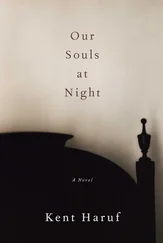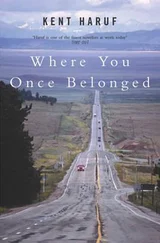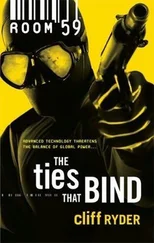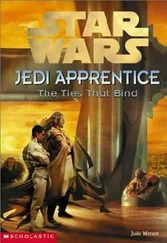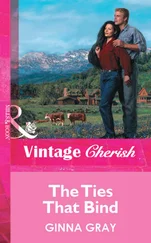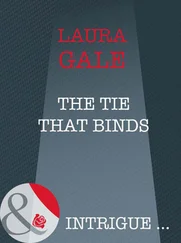“Goddamn it, I can do it. But she wants you. She wants you to come over there.”
He was sitting down there on that bareback excited Belgium, yelling up into the dark towards a dark face he could barely see.
“I could do it myself, but now she says she has to have you there. But I’ll make that right too, goddamn it. You wait and see.”
The woman in the upstairs window watched him on his horse in her front yard.
“Don’t you hear me?” he yelled. “Don’t you understand a goddamn thing I’m telling you? She wants you over there.”
But the woman was gone by now, leaving him yelling up into the dark where there wasn’t even a silent face in a window to hear him yell and rage. The woman had gone to wake her boy, who was seven now and had been since February twenty-fourth. She told him to get their saddle horse ready; she was riding over to the Goodnoughs’ to set things right and she would be back in the morning. And I guess Roy understood that he had done enough yelling for one night when he saw the boy go out the back door towards the corral, so he galloped back home again.
The woman got there a few minutes later. I can’t say exactly what she did or how she did it, but I’m certain she got Roy out of the room where he was less than no help, and then I believe she was able to get Ada revived enough to make another effort. Maybe she made some tea or something hot with herbs in it, or maybe it was just her voice and hand, but anyway she delivered the baby girl and Ada got some rest. And afterwards she must have made a couple of things plain enough that even Roy understood them, because two years later in June, when again it was Ada’s time, Roy didn’t wait until his wife had been in labor for two or three days and had turned to frazzle before he decided it was time for him to start howling in the dark. No, he came in broad daylight, knocked at the front door, and asked if the woman would come. So Lyman’s birth went easier, smoother, without the galloping horse and the yelling. This was 1899.
Well, Roy had a girl and a boy now, and I don’t suppose he ever expected much from Edith (more than just constant work, I mean) or ever thought much of hoping something for her either — he wouldn’t have; she was a girl, a potato peeler, an egg gatherer — but he might have expected more from Lyman, so he probably wasn’t real thrilled with the way Lyman turned out. And it wasn’t that Lyman didn’t work hard enough — he did, in his loose, mechanical, dry fashion — and Lyman sure as hell didn’t leave the farm very often until it was almost too late for him to ever leave it at all. But he just didn’t like any of it; he never really got his hand in. Lyman was too much of a lapdog even to suit his father.
But at least with both a boy and a girl on hand now to help, Roy could believe enough in tomorrow to begin adding on to his original quarter section, and he did. God only knows he was frugal enough. In fact, he was about so tight as to be able actually to squeeze blood from the turnips Ada grew in the family garden. As for his farming, he would do things like go on tying his machinery together with baling wire and patching it up however he could, rather than do anything as rash as to buy something new. Before he would do a thing that crazy he had to be dead certain that baling wire and goddamns wouldn’t work anymore. He never spent five cents on himself or his wife or his kids, and what he made he saved, and then about once every eight or nine years he would suck in his belt, spit, and then finally buy another quarter section of nearby Holt County sand for Lyman to help him sweat over. So in time, Roy acquired quite a lot of land. He had some Hereford cows with calves on grass, and a few Shorthorns to milk, besides the wheat and cornfields to till and plant and harvest.
Meanwhile, Edith and Lyman were growing up out here seven miles from Holt, and they were about all each other had. As kids, Edith says, they slept together in a double straw-tick bed in one of the upstairs bedrooms, and wrapping their legs around one another to keep warm they told themselves stories about what they were going to do when they were big enough and free enough of the farm and their father to do those great things. Well, they never did them. But during the days when they were kids, in the few hours left when they weren’t hoeing beans or milking cows or churning butter or shoveling shit out the milk-barn window, they played those games farm kids play behind haystacks and deep in tall cornfields. In the winter they went to school a little bit.
When Edith started school in 1903, when she started riding the three miles farther south to the converted chicken house with the foul two-hole privy behind it, riding on one of the played-out workhorses her father still kept and whose back was so broad that riding him her legs stuck straight out sideways, the boy who lived down the road from her was already in his seventh and next-to-last year of school. I believe he was a help to her — John Roscoe was — and I believe he took care of her. I know they rode to school together, the thirteen-year-old boy with stiff black hair and the six-year-old girl in high-topped shoes that had been her mother’s, and I know every school day for two years they rode home together. He also protected her during lunch hour and recess, never mind what the other kids said about Johnny has a girl friend, ain’t she sweet, when she takes her boots off, he tickles her feet , because I believe that’s when and how what later happened — nineteen years later — started. With just that much.
Then that ended. The two years were up; he had finished the eighth grade, so for quite a while John Roscoe and Edith Goodnough didn’t see a lot of each other except during harvest, even if they lived just a half mile apart.
Neighboring families don’t visit much when one of the neighbors is Roy Goodnough.
Anyway, Lyman was old enough to start school then, so Edith rode double on the broken-down workhorse to school with him. But that didn’t last very long, either. Lyman only went to school for four or five years, and Edith herself never finished the eighth grade. That has always bothered her, too. I believe she thinks things might have ended different than they did if she had finished the eighth grade.
“But what was I going to do?” she says. “He wouldn’t allow it. It was a waste of time.”
By “he” she means, of course, Roy.
WILL, then, what more do I need to tell you about those fifteen years that passed between the last two times Ada wanted the woman down the road to come? Just this, I suppose: in the pictures taken of Edith and Lyman between 1899 and 1914, Edith is a beautiful girl, with her mother’s big eyes and brown hair and enough of her father in her to make her stand up straight and face the camera full on. Also, in one of the pictures I’ve seen in the Goodnough family album, Edith has her arm around Lyman. He is standing there almost as if he’s been tucked into the folds of her long skirt, like he’s some kind of wet-combed cocker spaniel. Lyman looks scared and half protected at the same time. I don’t think he felt that way just when somebody was taking his picture.
But it was about Ada that I wanted to tell you now. I’ve already said how this country was a shock to her, how she had to live under a tarp for three or four months after already living in a wagon for three or four weeks, and how as thin as she was she still had to carry water in yoked pails for a half mile every day until her husband found time to dig their own well. She wasn’t made for that kind of life. And even if she had been, she was still married to a man like Roy Goodnough. She was bound by law to a hickory stick.
So in the same family album, while Edith and Lyman are growing up, their mother, Ada, seems to be sinking down. In one picture after another, she looks smaller, shorter, thinner. Her cheeks suck into bone, her thin brown hair turns to sparse gray. By 1913, in what must be the last picture taken of her, she stands barely as tall as Roy’s shoulder, and he was no more than five feet eight himself. In the picture I’m talking about, Ada looks like she might be her husband’s mother. About all you can make out of her face in the grainy photograph is her big eyes, staring not at whoever it was that held the camera, but away, off towards something in the distance.
Читать дальше

